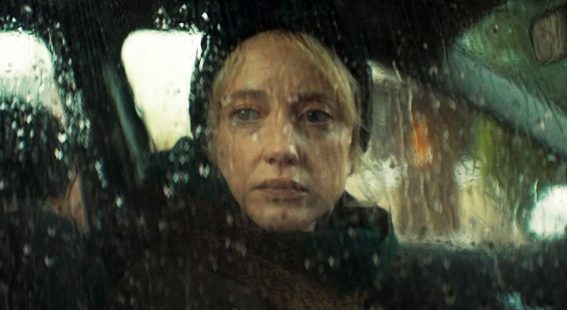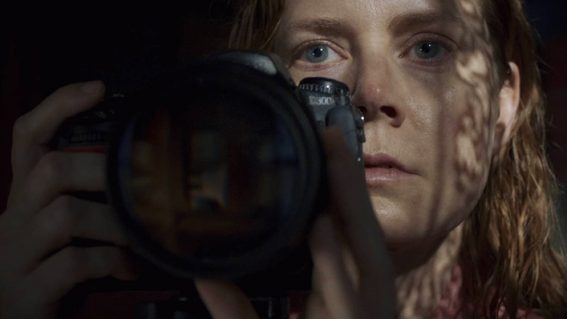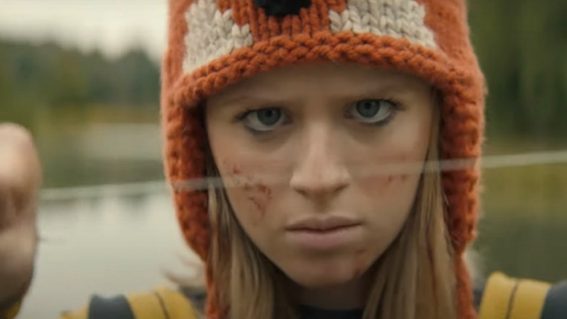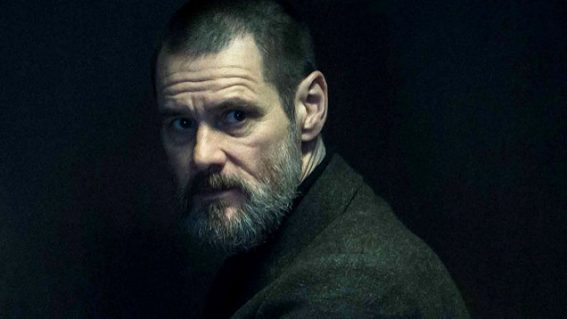If you imagine Escape Room is based in purgatory, it’s actually pretty good

This craze-hijacking thriller about a group of strangers who participate in a deadly escape room is an enjoyable but sometimes frustrating watch, writes critic Luke Buckmaster.
Does Escape Room take place in reality, or in a dreamscape? Despite a vaguely expressionistic aesthetic and many surreal moments, director Adam Robitel seems to suggest the former in his craze-hijacking thriller about a handful of strangers who participate in what is supposedly the world’s greatest escape room. The inference is that It Could Be Me or It Could Be You, tagging along to partake in the titular pastime only to discover ourselves a victim of a booby-trap building sadist.
And yet there are moments that go well beyond stretching plausibility, into almost otherworldly fantasy. In a knuckle-gobbling opening sequence Ben (Logan Miller) falls into a handsomely furnished study where, like the garbage compactor in Star Wars, the walls are literally closing in and will soon squish him into pulp. The panicked young man declares aloud that he is in need of a four digit code, but who is he talking to? The audience, of course; this unintended acknowledgement of the spectator being the first indication that something funny is going on with Escape Room’s internal reality.
In the second “room”, the five lead characters crawl through an air vent and emerge in a bitterly cold outdoors setting, with a log cabin and snow falling from the sky. But is there really a sky and is this actually snow? Average Joe truck driver Mike (Tyler Labine) says “Dumb question, are we outside?” – but it’s not a dumb question at all. Here the edge of the horizon can be reached, like when Jim Carrey literally bumped into the end of his known universe in The Truman Show.
The characters in Escape Room have a problem in determining something as simple as whether they are indoors or not, which doesn’t exactly bode well for their ability to piece together tricky clues in high pressure situations. And this is before they find themselves in a room where they are walking on the ceiling and everything is upside-down – a place seemingly designed by the mischievous monkeys from Roald Dahl’s The Twits.
I like to think this gnarly, enjoyable, sometimes frustrating funhouse flick is based in purgatory, where potential citizens of heaven are put to the test by a maniacal angel under instruction to reduce the number of admissions through the pearly gates. The obvious point of reference evoked by all the boobytraps and death machines are the Saw movies, which like Escape Room could be interpreted as a cynical comment on the pursuit of immersion in popular entertainment.
I was also reminded of the great The Twilight Zone episode Five Characters in Search of an Exit,, in which a handful of characters with no remembered past and possibly no future are trapped in a space that does not seem to conform to the rules of reality. Escape Room also has notes of the gamified fatalism in Agatha Christie’s And Then There Were None (also about a group of supposedly unconnected strangers who die according to a villain’s master plan), and riffs on the philosophical question at the core of David Fincher’s ‘what do you get for the person who has everything?’ thriller The Game. The answer to that question is obviously: mess with their minds and put the fear of God into them.
It’s a shame Escape Room’s ordinary cinematography and set design (with the exception of that marvellous upside-down area) keep the film’s surrealism in check, reducing imaginative readings of the space and feeding into a practical, workmanlike spirit reflected by the cast’s quotidian performances. But again: I like to think it is based in purgatory. That interpretation doesn’t make Robitel’s crass sequel-establishing final moments any better, but it does befit a story with no real beginning or end.
















